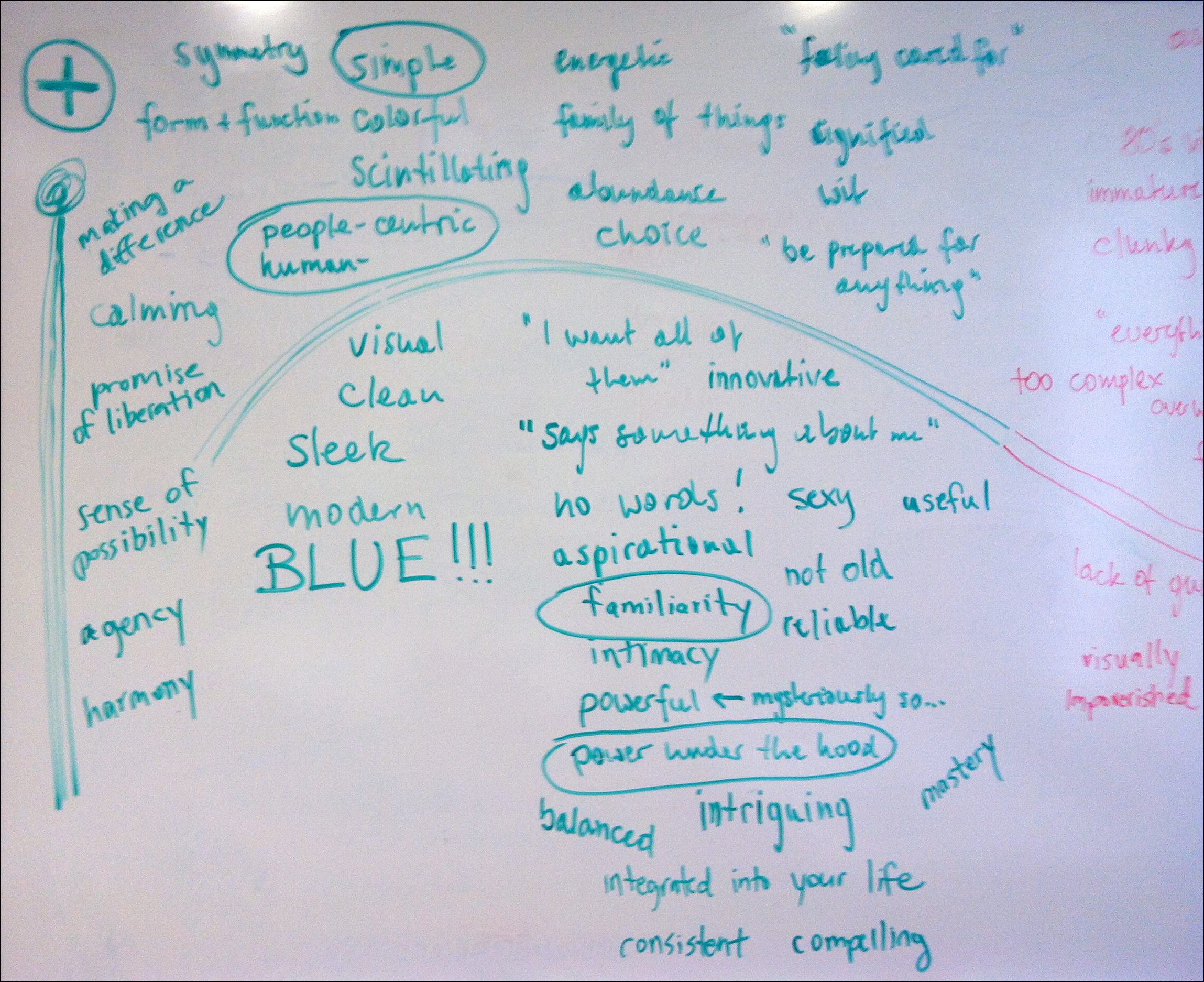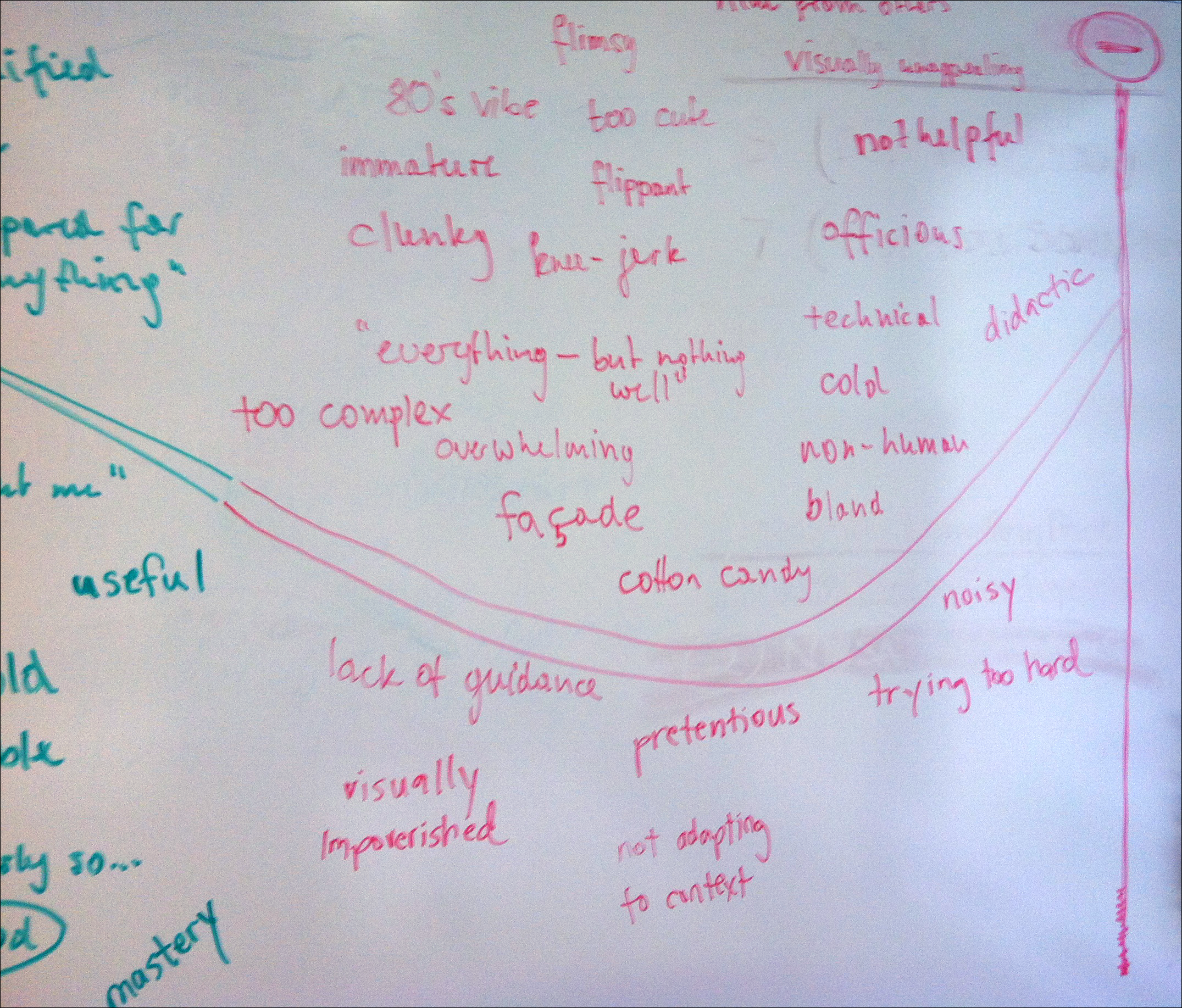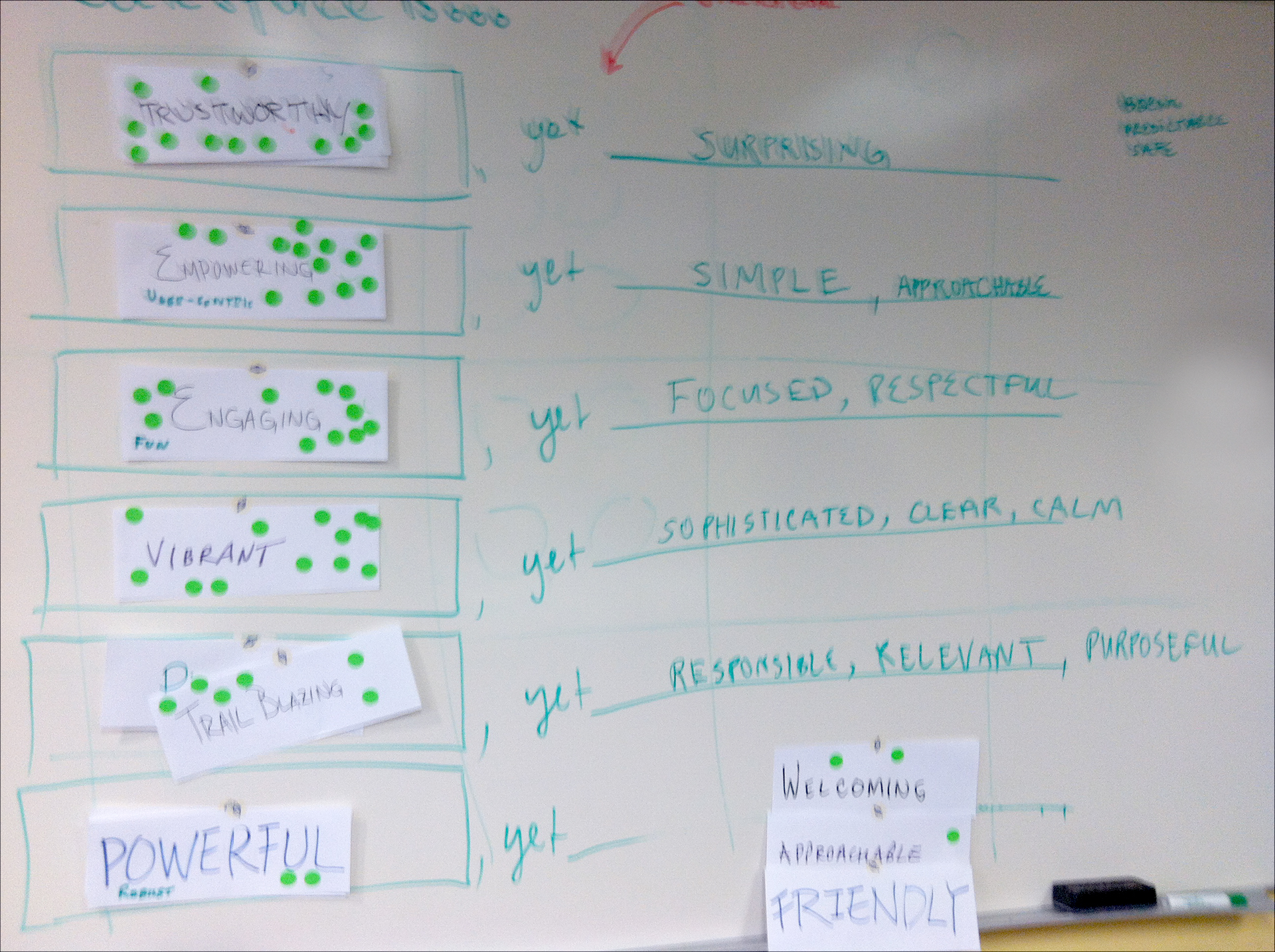Across its ecosystem, Salesforce has dozens of products and hundreds of features supported by an army of product teams. In 2013, I was the first product content strategist at Salesforce, and I noticed the voice and tone of the UI and the documentation weren’t consistent. Some products spoke in a stiff, formal voice. Some were friendly and casual. Some were dry, technical, and talked in jargon. We even had a renegade spirit who was smart, cool, and cracked hilarious jokes.
In short, Salesforce products and Salesforce content had multiple personalities.
In 2013, I had the pleasure of attending a talk by Kate Keifer Lee, who was then a content strategist at Mailchimp and the architect of the company’s now legendary Voice and Tone guidelines. Kate’s talk inspired me, and I realized that Salesforce also needed to define our brand’s voice and establish our own writing standards.
Mailchimp’s guide included plenty of content examples, and that was an important feature I wanted to add to Salesforce’s guidelines, as well. We needed to both tell and show product teams and content creators how to communicate with customers.
To kick off the initiative, I met with key stakeholders: executives from the Content Experience, User Experience, Marketing, and Product Management teams. I presented the problem and proposed a cross-functional effort to develop voice and tone guidelines for Salesforce. The stakeholders recognized the need for the guidelines, and they were aligned on the goal. I got the green light to proceed.
To define our brand’s personality, we needed to establish our values. At the time, Salesforce had one value—trust—and it was the company’s top priority. However, a single brand value wasn’t enough to flesh out an entire identity and a distinct voice. To gather more information about the attributes of our brand, I conducted research and led an ideation workshop.
I interviewed several stakeholders to learn more about the company’s history, as well as the goals and priorities of its leadership. I was not able to interview the CEO, Marc Benioff, so instead I read all of his books, which provided valuable insights into his motivations for founding the company and the spirit that embodied the company’s growth and evolution.
The most critical and productive step in the research process was conducting a brand experience workshop, which allowed stakeholders to establish a shared vision and creative vocabulary that would ultimately serve as the inspiration for our content strategy.
I invited executives from the Content Experience, User Experience, Marketing, and Product Management teams to participate in the 2-hour workshop, which I facilitated.
During the activity, participants looked at a collection of about 100 images of digital interfaces, products, services, textures, and photography. Then participants voted on the images that represented (or didn’t represent) our goals for the experience of Salesforce products.

Afterwards, we plotted the images on a continuum and talked about why some images captured our brand’s identity and others didn’t. Then we came up with a collection of positive experiential goals (what we wanted the experience of our brand and products to be). We also came up with a collection of negative goals (what the experience should not be).


Next I directed participants to break into small groups and come up with 6 personality attributes that describe the Salesforce brand. Then we reassembled as a full group to discuss and synthesize all the suggestions. By the end of the workshop, we managed to achieve a consensus on a final list of positive experiential goals and brand personality traits.

In the end, it was incredibly productive to explore the brand identity as a group in a tangible and visual way. The activity also created even more buy-in from stakeholders since they were part of the initial ideation process, and they were invested in the brand attributes we generated.
Armed with my research findings and the results of the experience workshop, I embarked on the process of writing a first draft of our voice and tone guidelines.
These were the steps I took during writing process:
After drafting the guidelines, I gathered feedback from stakeholders and content experts, then I made the necessary revisions. When all the necessary teams approved the final draft, we were ready to publish the new voice and tone guidelines.
When the guidelines were complete, we published the guidelines to the Content Experience team’s wiki, and we distributed the PDF to content teams at Salesforce and publicized the guidelines using the company-wide communication platforms. Additionally, I conducted a “roadshow”—a series of presentations to teams across the company to get people excited about the new content standards, answer any questions, and address concerns.
Company standards evolve over time, so it’s no surprise that the voice and tone guidelines have changed since I developed them a decade ago. In their latest incarnation, the guidelines have been incorporated into Salesforce’s award-winning Lightning Design System.
When I first launched this initiative, my eventual goal was to publish our content guidelines to the world—just like the Mailchimp guide that helped inspire this project in 2013. I’m delighted to see the voice and tone guidelines included in Salesforce’s design system, emphasizing that both content and design shape the product experience.
The guidelines have been streamlined over the years, but much of the content is the same and almost all of the original examples of UX writing are still part of the standards. This project helped ensure brand and content consistency across the Salesforce ecosystem, which builds more trust with Salesforce users. And there’s no doubt that the guidelines made Salesforce content friendlier and more human, so the information is easier to understand.
This project also established Salesforce as a content leader; the voice and tone guidelines are routinely included in official roundups of the best company content standards, like this article from UX Writing Hub.